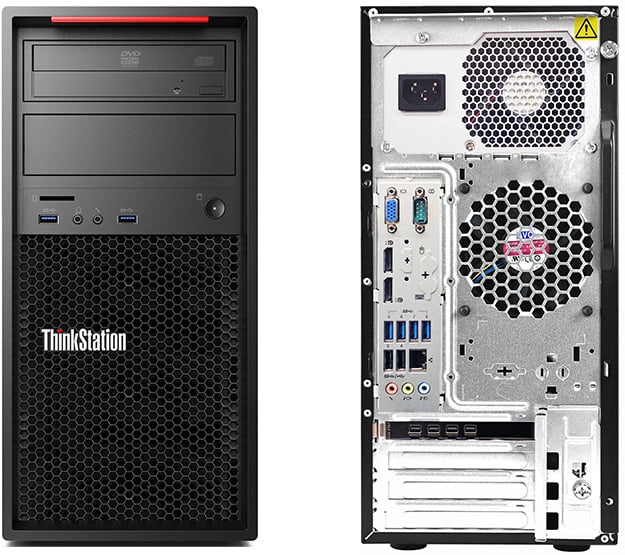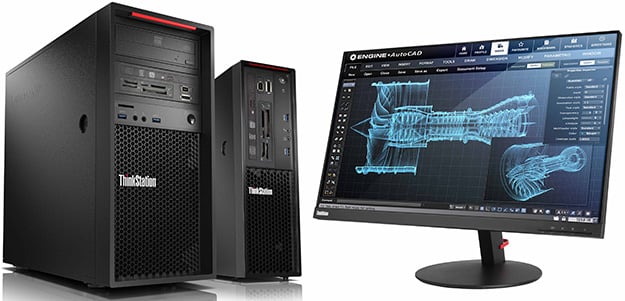Lenovo Announces ThinkStation P320 Workstations With Kaby Lake And Quadro Graphics For VR Developers

Lenovo is pitching the emerging interest in virtual reality as a reason for developers to consider its new ThinkStation P320 workstations. The world's top PC maker (in terms of market share) used Develop3D Live as the launchpad for its new systems, which featured Intel Xeon and 7th generation Core i3/i5/i7 (Kaby Lake) processor options paired with NVIDIA Quadro graphics.
Buyers can opt for a full-tower enclosure supporting up to a Quadro P4000 (Pascal) graphics card, or a small form factor (SFF) setup with up to two Quadro P1000 GPUs. Either setup can be configured with an Intel Xeon E3-1200 v6 processor or a Core i3/i5/i7 chip based on Kaby Lake, with speeds of up to 4.5GHz via Turbo Boost.
Systems can also be configured with up to 64GB of DDR4-2400 ECC memory. On the storage side, full-tower systems can have up to 2TB of M.2 SSD storage, up to 8TB of 2.5-inch SSD storage, and up to 16TB of 3.5-inch HDD storage (or 8TB of hybrid. SFF setups are a bit more limited, though they still support having up to 2TB of M.2 SSD storage, up to 6TB of 2.5-inch SSD storage, and up to 8TB of 3.5-inch HDD or hybrid storage.

"The ThinkStation P320’s ProVR certification, along with its performance credentials, makes it a perfect match for the Virtalis VR4CAD software. It delivers a superb balance of 3D CAD and VR performance without breaking the bank," said Steve Carpenter, Sales Director at Virtalis. "It’s also perfect for small- to medium-sized companies looking to enhance their engineering workflow by taking their first steps onto the VR ladder."
Lenovo isn't making a big stretch in pushing the VR angle. According to Global Industry Analysts, the global market for VR software and hardware is projected to reach $22.4 billion by 2020. Gaming is not the only driving factor, either. Market opportunities existing in a variety of areas, including industrial sectors and healthcare.
As to the new workstations, they'll ship with the same selection of ports on the front and back. On the front, users will have access to two USB 3.0 ports, discrete headphone and microphone jacks, and an optional 9-in-1 or 29-in-1 media card reader. Lenovo also lists Firewire and eSATA, though they're not visible in the press photos.

On the back, users will have access to an additional four USB 3.0 ports, along with two USB 3.0 ports, GbE Ethernet, separate audio in and out jacks, a microphone input, VGA and DisplayPort outputs, and an optional serial port.
Lenovo says its ThinkStation P320 will be available at the end of April.

